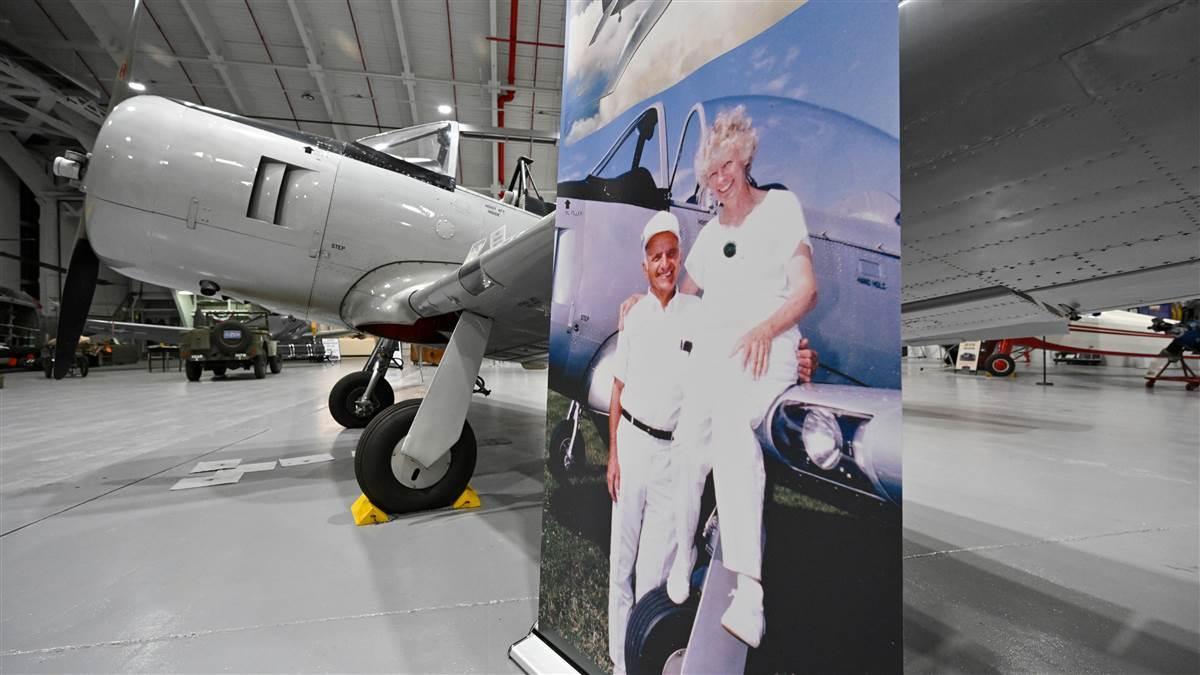Homecoming
Rare fairchild model returns to its roots


In September 1945, the Navy awarded Fairchild the contract to build three airframes, two for flight testing and one for structural testing, designated XNQ (X for experimental, N for trainer, and Q for Fairchild). The first prototype (75725) was flown in October 1946 by Fairchild’s chief pilot, Richard A. Hensen. A second prototype (75726) was completed in February 1947.
With its practical design and easy flying characteristics, the XNQ seemed to be the perfect trainer—and then things went south. Now the U.S. Air Force also wanted a new primary trainer. Hensen flew the Fairchild model to Wright Field in Ohio where it competed in test trials with the Beechcraft Model 45 (later the T–34) and the Temco TE-1A (later the T–35). Although the Fairchild model was selected by the U.S. Air Force for its primary trainer, dubbed the T–31, Congress ended up canceling the program. But the Navy and Air Force still needed trainers, so in 1950 the two XNQ prototypes were delivered to Randolph Air Force Base in Texas where an inter-military feud began. The Navy wanted conventional landing gear for carrier operations; the Air Force favored tricycle landing gear. One side wanted a transition from a light trainer to heavier equipment for new pilots, the other side thought heavier aircraft were fine for training. Eventually a lack of funding put an end to the XNQ/T–31.
Texas pilots Don and Ann Pellegreno spent 10 years restoring the second prototype (75726). The first was destroyed in a crash. The Pellegrenos flew the XNQ to airshows such as EAA AirVenture to share this one-of-a-kind aircraft with other aviation enthusiasts. Ann famously retraced Amelia Earhart’s round the world flight in a similar Electra—she made it! And dropped a wreath on Howland Island during her flight. After Don’s death and Ann hung up her wings, she wanted the XNQ to go home. She contacted Hagerstown Museum Executive Director and President John Seburn.
“Don and Ann always said they wanted to have it come home to Hagerstown,” Seburn said. “She called us and said it was time for it to come home.”
Pilot Doug Rozendaal piloted the XNQ from Texas to the Hagerstown Aviation Museum in June 2024, where it joins a collection of aircraft and memorabilia celebrating the rich aviation legacy of the Fairchild brand. The museum boasts the largest collection of Fairchild aircraft, and it is growing.
“It was quite a day when it flew overhead; Ann’s wish was to have it preserved and restored to share with others,” Seburn said.

The cockpit

Of note in the cockpit layout of the XNQ was an attempt to standardize the instrumentation. Designers attempted to ensure each control looks and feels like the part it operates; be in a position corresponding as near as possible to the part it controls; move in the same direction as the part being operated; and allow the pilot to actuate the controls only once.
Meet Giuseppe the cat

The Hagerstown Aviation Museum in Maryland has a special mascot. Meet Giuseppe Bellanca, a nearly one-year-old kitten who was rescued by museum events coordinator Karen Hemenway. One of four kittens trapped in a culvert on the HGR field, Giuseppe was the only survivor. Hemenway named the cat after aircraft designer Giuseppe Mario Bellanca who was the first person to build an airplane in Hagerstown in 1916. “We were only too happy to adopt him, and he has become our goodwill ambassador,” said Hemenway. “I take him out to the airplanes, and he is an accidental educational tool.” Giuseppe has a fan following on Facebook (look under Animals and Pets, not people) and Hemenway creates reels featuring the friendly fuzzy fellow enjoying his aviation surroundings.
Does your airport have a mascot? Send us your photos to [email protected] subject line Airport Mascot.



